Do you want to learn how to wrap a handle in leather? This guide has all the steps you need. You will learn what materials and tools you will use and how to make a wrapped handle that is special and unique.
You can make your handles look nicer or even just replace them with leather wrapped handles. This guide will show you how to wrap the handles so they look great. It is easy and fun!
What You’ll Need
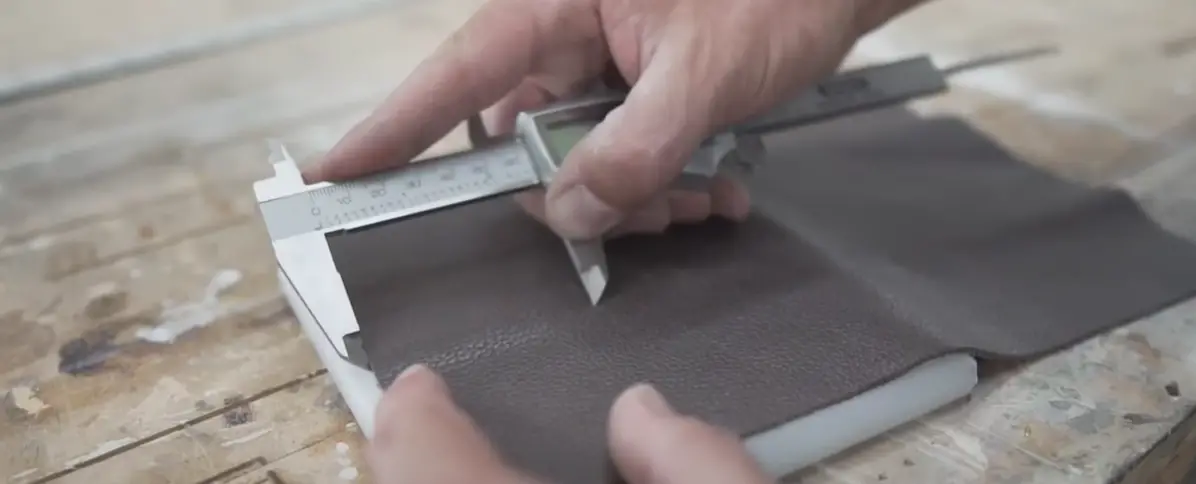
To leather wrap a handle, you will need:
- Scissors
- Heavy-duty thread
- Leather pieces (at least 2x the size of the handle)
- Needle and thimble
- Ruler or tape measure
- Awl or other sharp object to make holes in the leather
- Sandpaper
- Leather glue or contact cement
How to Leather Wrap a Handle?
Choose the Leather
Choose the leather for your project. Leather comes in many colours and designs. Pick one that looks good with the handle. Make sure it is big enough to cover the handle completely, and have extra room for curves or corners.
Trace the Handle’s Outline onto the Leather
Trace the outline of the handle onto the leather with a pen or pencil. You can use a template if you have one, but don’t worry if you don’t—you can just trace it freehand. [1]
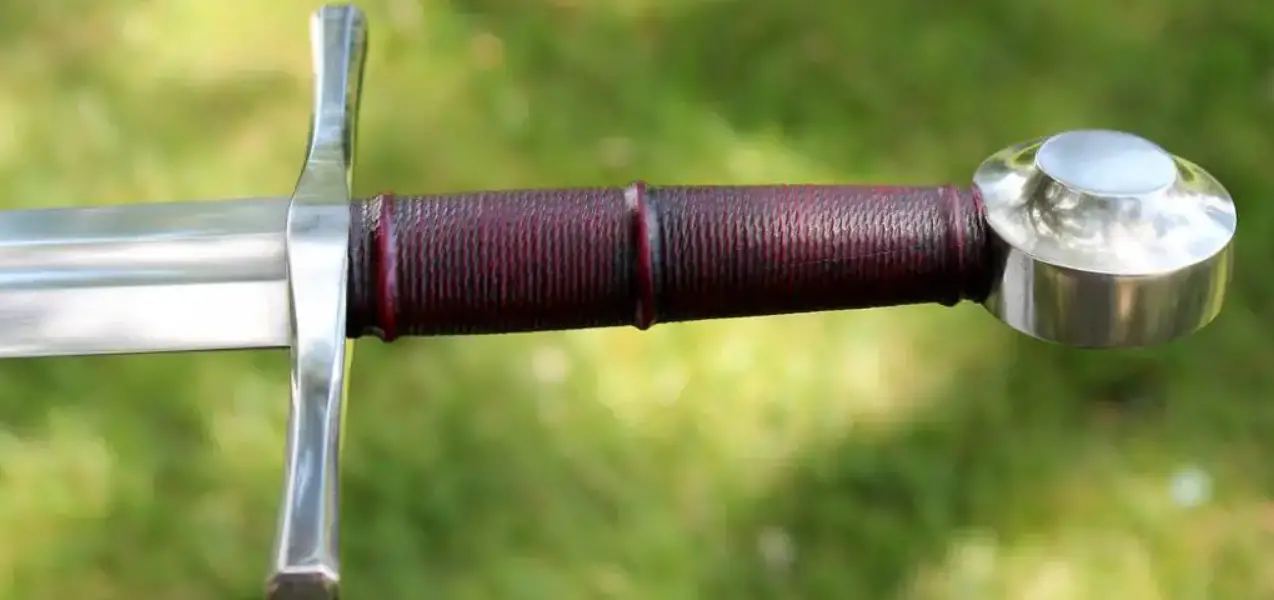
Cut Out the Handle’s Outline from the Leather
Use a sharp pair of scissors to cut out the outline from the leather. Make sure you get it as close to the lines as possible. You can always trim off small bits later if needed.
Soak the Cut-Out Piece of Leather in Water
Soak the leather piece in water for about five minutes. This will make it easier to work with and mould into shape.
Shape the Leather Around the Handle
When the leather is wet, put it around the handle. Use a sharp object like an awl to make holes for curves and corners. Let it dry completely before going on to the next step.
Wrap the Leather Around the Handle
Take the cut-out piece of leather and wrap it around the handle. Make sure to keep all the edges even. Once you are happy with how it looks, use a heavy-duty thread and needle to sew together the edges.
Secure the Leather in Place
To make sure the leather stays in place, use a strong adhesive like glue or contact cement. Leave it to dry for at least 24 hours before using the handle.
Attach the Leather Handle to the Knife
Once the glue is dry, attach the leather handle to your knife. Make sure it is secure and won’t slip off.
The final step is to sand down any rough edges or uneven pieces of leather. This will give the handle a smoother finish and a professional look.
Tips and Tricks
- Make sure to use a sharp pair of scissors when cutting out the leather.
- Use a ruler or tape measure to ensure your measurements are accurate.
- Soaking the leather in water makes it easier to shape and mould around the handle.
- Using an adhesive will make sure the pieces stay together and don’t slip off.
- Sand down any rough edges for a smooth finish.
What Kind of Leather is Used for Knife Handles?
The leather most often used for knife handles is called full-grain leather. It comes from cows and it lasts a long time if you take care of it. It looks nice on the handle of a knife. Other types of leather, like suede, top-grain, and split-grain can also be used for making knife handles.
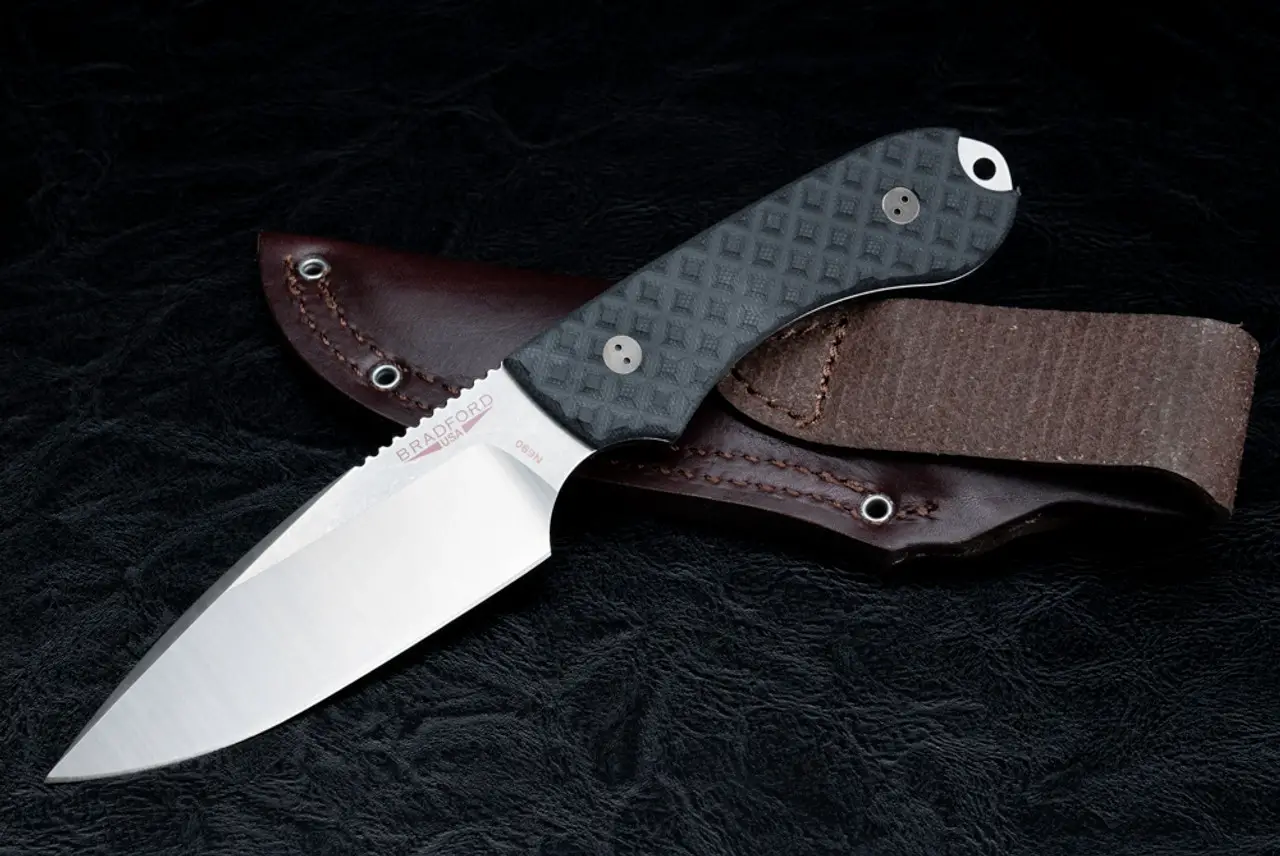
Leather wrapping a handle is an easy and fun way to customise knives or other tools. Following the steps outlined in this guide will help you make a beautiful and unique handle that will last for years to come.
Is it Important to Leather Wrap Your Knife Handle?
Leather wrapping a handle can make it look nicer and easier to hold. It will also stop water or dirt from getting inside and making the handle rusty.
If you use special waterproof glue, the leather wrap will stay on for a long time. Leather wrapping your knife handle is worth it! It will make it look better and last longer.
Leather wrapping a handle can seem intimidating at first, but with the right tools and techniques, you can create something beautiful. [2]
FAQ
How do you wrap a leather hammer handle?
Begin by soaking the leather in water, which will make it easier to work with. Then, cut out the handle’s outline from the leather and shape it around the handle.
Wrap it securely around the handle and use a strong adhesive to secure it in place. Finally, attach the leather handle to your hammer and sand down any rough edges or uneven pieces of leather.
What kind of adhesive should I use to secure the leather wrap?
A strong, waterproof adhesive like contact cement or glue will work best for securing the leather handle in place. Make sure you let the adhesive dry for at least 24 hours before using your hammer.
Can I use a different type of leather for my handle wrap?
Yes, you can use different types of leather like top-grain, suede, or split-grain to make a unique and stylish handle. Make sure to carefully measure and cut the leather pieces so they fit perfectly around the handle.
Is it hard to wrap a leather handle?
Leather wrapping a handle can seem intimidating at first, but with the right tools and techniques, you can create something beautiful.
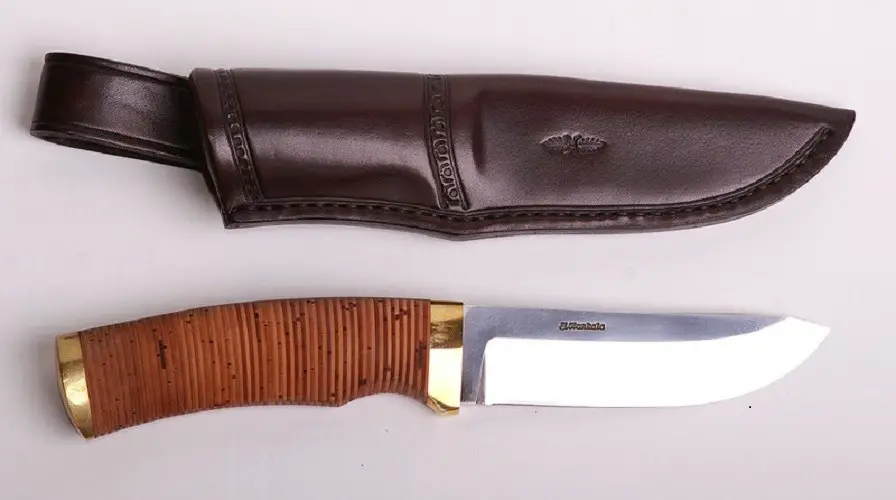
With this guide as a reference, you should have no trouble creating a unique and stylish leather-wrapped handle. Just make sure you take your time and work carefully!
How do you attach the leather to a walking stick?
Start by cutting a piece of leather that is large enough to wrap around the walking stick. Then, use an adhesive to attach it to the walking stick and make sure you let it dry for at least 24 hours before using it.
Finally, shape and sand down any rough edges or uneven pieces of leather for a smoother finish.
How do you string to wrap a handle?
You can customise your knife or tool by string wrapping the handle. Cut two pieces of paracord that are long enough to wrap around the handle. Start at one end and wrap one piece of cord in a spiral pattern around the handle.
Tie it off with another piece of cord. Then use a sharp knife to cut off any extra cord and seal the knots with glue or epoxy.
How do you wrap a hammer handle?
Start by measuring the handle and cutting out a piece of leather that is large enough to wrap around it. Then, soak the leather in water to make it more pliable.
Wrap the leather securely around the handle and use an adhesive to keep it in place. Finally, attach it to your hammer and sand down any rough edges or uneven pieces of leather.
How do you bind a knife handle?
Start by cutting two pieces of leather that are large enough to wrap around the handle. Then, use a strong adhesive to attach the leather to the handle and make sure you let it dry before using it.
Finally, shape and sand down any rough edges or uneven pieces of leather for a smoother finish. Once you’re done, your knife will have a unique and stylish handle that is sure to last for a long time!
What is the best paracord for handle wrap?
550-pound paracord is the best kind of cord to use for wrapping a handle. It is very strong and secure, and also comfortable in your hand.
Other types of cords like nylon or polyester can be used, but they might not be as strong or comfortable as 550-pound paracord.
What tools do I need to leather wrap a handle?
To make a leather-wrapped handle, you will need some tools like a knife, scissors, measuring tape, and glue.
You also need some leather or paracord for wrapping. Finally, have sandpaper so you can smooth the edges of the handle. With these things you can make an awesome leather-wrapped handle!
What is the best way to finish a leather wrapped handle?
To finish a leather-wrapped handle, you can use some wax or oil for extra protection. This will help make it more durable and also give it a nice polished look.
Make sure you apply evenly and allow enough time for drying before using your tool or knife.
Why should I leather wrap a handle?
Leather wrapping is a great way to add unique style and personality to your tools or knives.
It also adds extra comfort in your hands, since the leather will conform better to your grip. And if you use quality leather and take the time to do it right, it can last for many years!
Why is leather wrapping a handle important?
Leather wrapping a handle is important because it provides extra grip and comfort in your hands. This can be especially helpful when using tools or knives that require precision work.
It also adds style and personality to any tool or knife, making it stand out from the crowd. So not only does it look great, but it also adds a functional benefit.
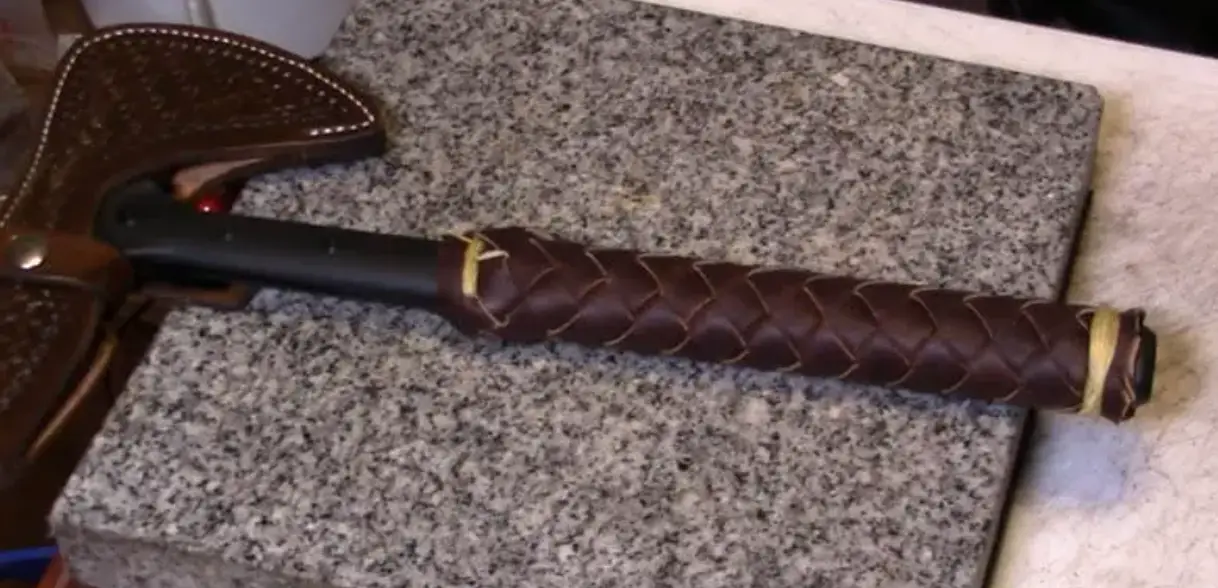
How do you care for leather wrapped handles?
It is important to take good care of any leather-wrapped handles. Make sure that you regularly clean the handle with a damp cloth and apply some wax or oil to keep it looking polished and new.
And always store your tools or knives in a dry place, away from any moisture that could damage the leather.
Does leather wrapping add value to a tool or knife?
Yes, leather wrapping can definitely add value to a tool or knife. Not only does it look great and provide extra grip and comfort, but it also adds personality and character to any item.
And if you use quality materials and take the time to do it right, it will last for many years, adding resale value to your tool or knife.
What is the best glue to use for leather wrapping?
The best glue to use when leather wrapping a handle is epoxy. Epoxy will create a strong bond that will hold up well over time. Make sure you read the directions and apply evenly across the surface of the leather before attaching it to the handle.
Does leather wrapping require any special skills?
No, leather wrapping does not require any special skills. It just requires time and patience so you can make sure that the handle is securely wrapped and finished properly for a long-lasting result.
With some practice, you will soon be able to create beautiful leather-wrapped handles with ease!
Do I need to seal the leather wrapped handle?
Yes, it is important to seal a leather-wrapped handle after you have finished wrapping. This will help protect the leather from moisture and dirt while also giving it a smoother finish.
You can use wax or oil for sealing, just make sure you apply evenly and allow enough time for drying before using your tool or knife.
Is leather wrapping hard?
No. It just takes time and patience to get it right. With the right tools, materials, and a bit of practice you can create beautiful leather-wrapped handles with ease!
So don’t be intimidated by this project – just follow the steps above and you’ll soon have that perfect leather look you’re aiming for.
Are there any tips that can help me wrap a handle with leather?
Yes. Here are some useful tips to keep in mind when you’re leather wrapping a handle:
- Make sure to use quality materials for the best result.
- Work slowly and take your time so you can get the perfect look.
- Apply wax or oil to the surface of the leather for extra protection.
- Use epoxy glue for a strong and secure bond.
- Allow enough time for drying before using your tool or knife.
- Store your tools or knives in a dry place away from moisture.
Can I wrap a handle with synthetic leather?
Yes, you can also use synthetic leather for wrapping handles. Synthetic leather is usually more affordable and easier to maintain than real leather, so it could be a good option if you’re looking for an economical solution.
However, it won’t last as long and may not provide the same level of grip as real leather, so be sure to consider this when making your choice.
Which tools do I need to leather wrap a handle?
You will need a few basic tools to help you wrap a handle. You’ll need something to cut the leather and shape it, such as an X-Acto knife or scissors; epoxy glue for creating a strong bond; wax or oil for sealing the surface of the leather; and a damp cloth for cleaning the handle. Once you have all these items, you’ll be ready to start leather wrapping your handle!
Which type of leather should I use for wrapping a handle?
It depends on what you’re looking for. If you want a durable and long-lasting finish, then full grain leather is the best option.
Full grain leather will provide good grip and comfort, as well as protection from moisture and dirt.
On the other hand, if you are looking for something more affordable, then a synthetic leather might be a better option.
Should I use leather dye when wrapping a handle?
If you’d like to add color to the leather wrap, then yes, you can use a leather dye. Dyeing your leather will give it an extra layer of protection as well as adding an aesthetically pleasing finish.
Just make sure you test the dye beforehand on an inconspicuous area and use it according to the instructions on the label.
Can I use leather wrap for other objects?
Yes, you can use leather wraps for a variety of items. Leather wraps look great on knives and tools, but they can also be used to add a stylish touch to furniture, jewellery boxes, and even car interiors.
So get creative and find different ways to make your leather-wrapped handles stand out! As you can see, leather wrapping is simple and straightforward once you know what to do.
Useful Video: How To Wrap a Handle in Leather – Leather Work ASMR
Conclusion
Overall, leather wrapping a handle is something that anyone can do and it requires very minimal resources. The key is taking the time to measure and prepare the leather and using strong adhesives to ensure a safe and secure wrap.
Additionally, there are tons of creative design options, if you have the imagination to come up with new and innovative looks.
With a little practice and patience, what might seem like an intimidating task can be done by anyone in a few simple steps. So go ahead—try your hand at leather wrapping your favourite handle today!
The satisfaction of completing your own creation will make it all worthwhile! And don’t forget to show off your hard work on social media when you’re done!
References
- https://leatherek.com/how-to-leather-wrap-a-handle/
- https://leatherhandy.com/how-to-leather-wrap-a-knife-handle/

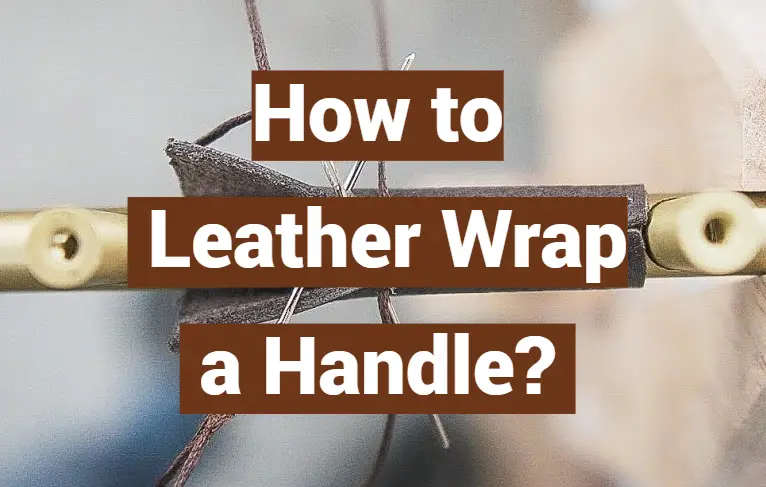
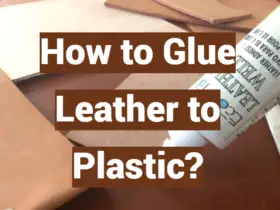
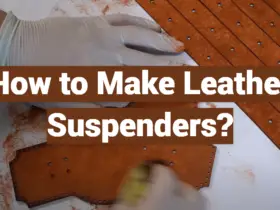
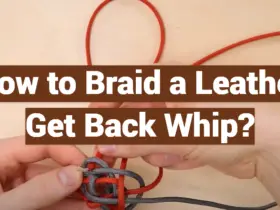
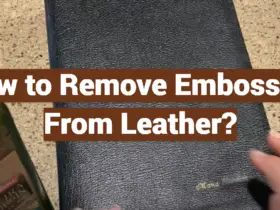

Leave a Reply